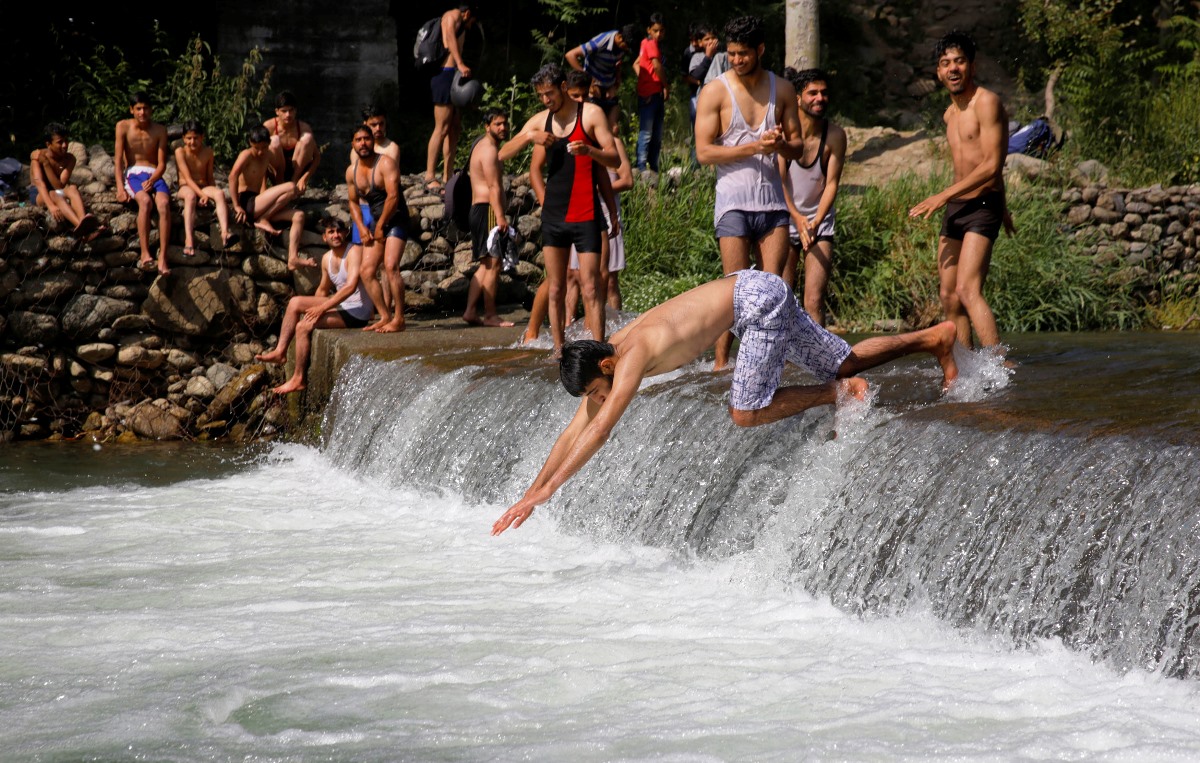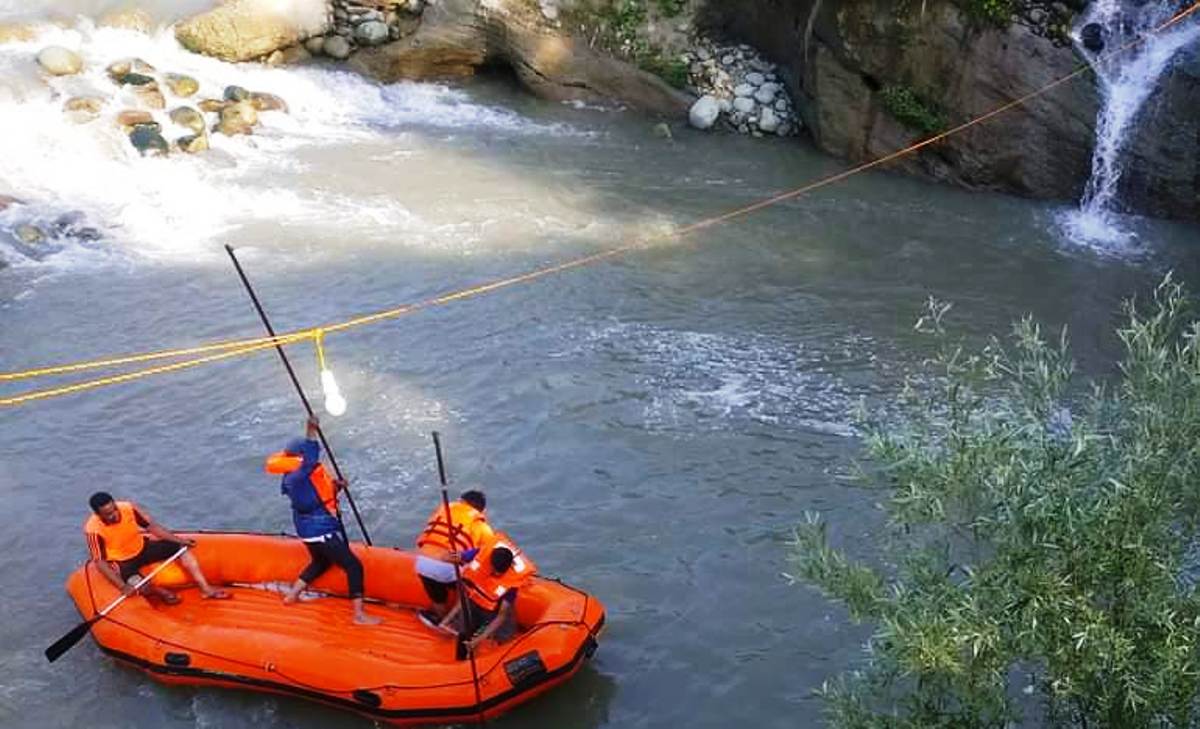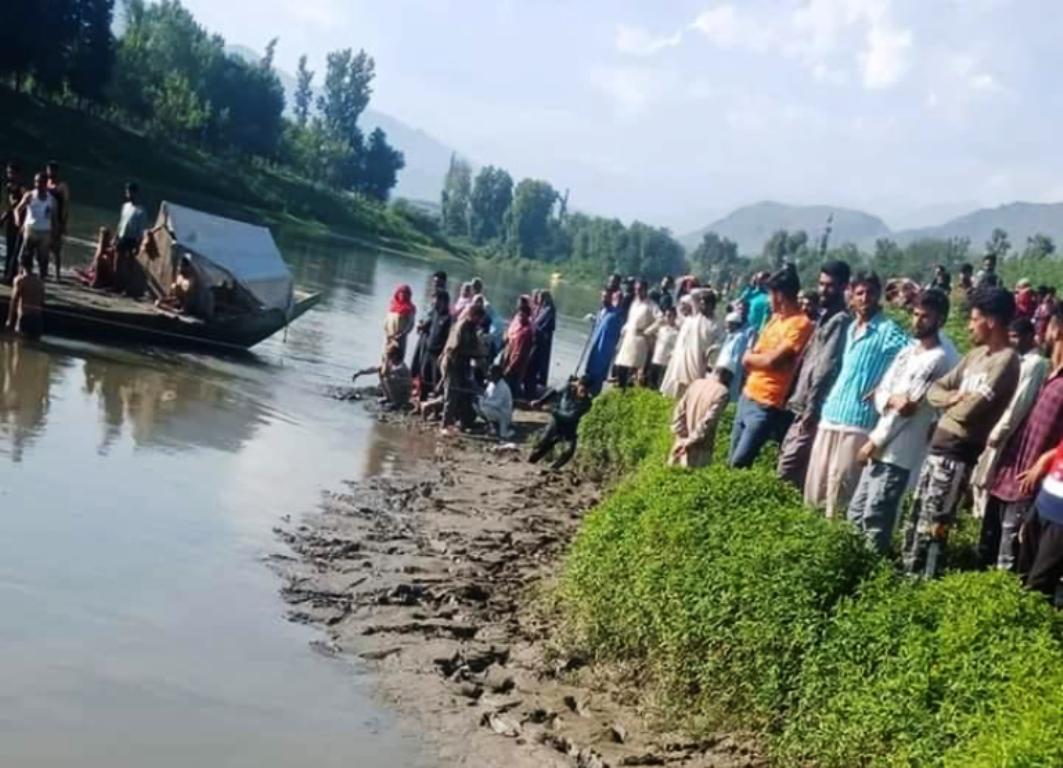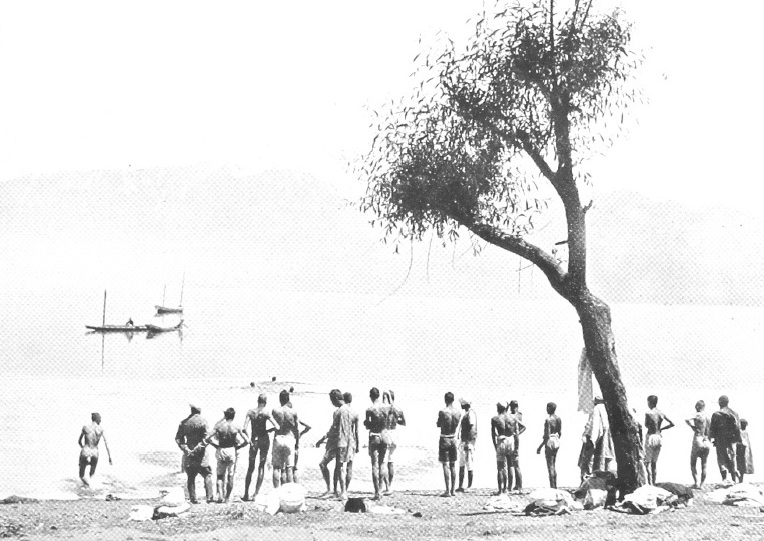Around 35 people, most of them minors, have drowned while bathing in streams and ponds to beat the scorching sun. This has triggered calls for the deployment of lifeguards near water bodies frequented by people, reports Umar Mukhtar

KL Image by Umar Mukhtar
On July 12, Gowhar Manzoor Gannie, 10, along with his two peers went for a bath to a nearby pond at Dever Lolab. The pond is an attraction among the locals, particularly children. Every year, as the mercury rises, the young men and the children of the nearby places throng the pond to beat the heat.
But on this unfortunate day, Gannie chose the wrong time to get into its waters. At around 10 am, he along with his friends went for a bath without informing his parents. As soon as they went into the waters, Gannie took a deeper dive and vanished. His other two friends raised the alarm but there was nobody around. They went rushing to a nearby shop and informed an adult person there. He rushed to the pond and pulled Gannie’s leg. But it was already too late. Gannie had already died.
“The news reached us and we rushed to the spot. We found him lying there with people encircling him,” Ajaz Ahmad, Gannie’s uncle, said. The family members rushed him to the hospital but he was declared dead on arrival.
Prior to this incident, there were many drowning cases in this pond. The locals claim that they have many times asked the authorities to fence the pond and to keep a boat there for the rescue mission if any untoward incident happens.
“These untoward incidents will continue to happen if the government does not intervene,” Ahmad said.

In Another Village
The same day, in the same district, another minor boy drowned at Chindigam Kupwara died in similar circumstances. Mohammad Asif Khan, 14, went to take bath at a nearby irrigation pond after coming from school.
Like Gannie, some of his friends decided to take a bath to beat the scorching heat. A moment later he drowned.
“With the help of authorities it took us more than five hours to retrieve the body from the pond,” said Lala Akbar, Khan’s uncle.
The two drowning incidents of minors have sent shock waves among the locals in the whole area.
Daily Drowning
Apart from these two incidents, almost every day cases are being reported about drowning. On June 7, Faizan Ahmed, 18, died at Budgam’s Nilnag Lake while having a bath.
On May 21, a 17-year-old boy drowned in Srinagar’s Noorbagh area. On June 9, a 14-year-old boy died after drowning in Budgam. A minor also died by drowning on June 2 in North Kashmir’s Bandipora.
In response to this, authorities in Bandipora banned swimming in Nallah Madhumati from June 10.
Besides, two people at Handwara and one at Kakapora Pulwama drowned while bathing. Two among them were children and one was a young man. In another incident, an elderly woman drowned at Sangam on May 17. Two incidents of swimming-related deaths were also reported in Poonch on June 6 and 11.
Experts believe that the rising number of cases can be stopped if there is proper implementation of the standard procedures by the authorities.

Lifeguard
Introducing lifeguards at the water bodies is one of the first measures that need to be implemented. Lifeguards are the well-trained persons stationed by the authorities near water bodies for the purpose of rescue in case of drowning.
“If you will go outside, there is always a lifeguard near the beaches or any water bodies,” said Riyaz Ahmad, a trained swimmer. “But unfortunately here no such concept exists despite many drowning deaths every year,”
Sharing his experience with Kashmir Life, Ahmad said that some years ago he was in Goa and decided to go swimming at a beach.
“I swam for some distance in the sea and after some minutes, I found Lifeguards approaching me. They told me that they came to check why I did not return to the beach,” he said. “After I told them I was a professional swimmer, then only was I allowed to swim further”.

Ahmad is a trainer at Nigeen water facility centre where he teaches swimming voluntarily. He is also a member of the Swimming and Survival society that keeps records of drowning cases.
Ahmad said that society keeps track of only those cases that are reported by the media but he is sure that there would be many more drowning cases in far-off places that are not reported.
“The temperatures saw a rise from the second week of June, and so did the number of drowning cases. Till now in almost one month, we witnessed around 35 cases. Out of 35, just five persons could be saved,” Ahmad said. “It is almost a life lost a day. Had there been lifeguards, the maximum of the lives would have been saved.”
Ahmad said that 95 per cent of the cases of drowning are either teenagers or children.
Sharing the data that the society has compiled, Ahmad revealed that last year 80 people drowned in just four months. Also, he cites the lack of infrastructure as another factor for such a level of mortality rate in drowning cases.

Lack of Swimming Pools
“There is no swimming pool in Kashmir, except a few small privately-owned pools in hotels,” said Danish Ahmad, who teaches swimming at Delhi Public School Srinagar adding that the percentage of the people who could swim was very less in Kashmir. “This percentage won’t be more than 5 per cent.”
Danish said that the percentage of swimmers in the other Indian states goes up to 35 per cent.
“The reason for the lack of swimmers in Kashmir is the lack of pools,” he said. “Swimming is an Olympic sport but it is quite unfortunate that this is not even considered as a sport here. Just a couple of schools have pools. Rest the sport is not taught in schools.”

Danish recalls that he used to participate in an inter-school swimming competition. “The participating schools used to be of the Srinagar district. But we had no inter-district tournaments as schools from the other districts had no idea of swimming,” he said.
“The sports council is already making a swimming pool at Gindun stadium Rajbagh whereas in Jammu there is already one functional swimming pool,” Danish said. “In Kashmir, there are only three water sports centres with limited capacity and more such centres are needed to train people.”
Historic Context
Swimming has been an inherited art in Kashmir at one point in time. The Christian missionary schools became popular only after they made swimming mandatory. Their management trashed the criticism by insisting that it was a shame that natives of a water abundant place would not know swimming. This triggered a movement and the batches from the Biscoe School would actually rescue people from drowning in Jhelum.

Unlike other places, Kashmir is water-body abundant and has a number of lakes, which can host major training facilities. The shallow lakes like Dal, Nigheen and Mansbal can become key centres for the new generation especially if the massive population of physical education teachers are asked to move from left-right routine. A generation trained in swimming would mean force multiplication in disaster management.















